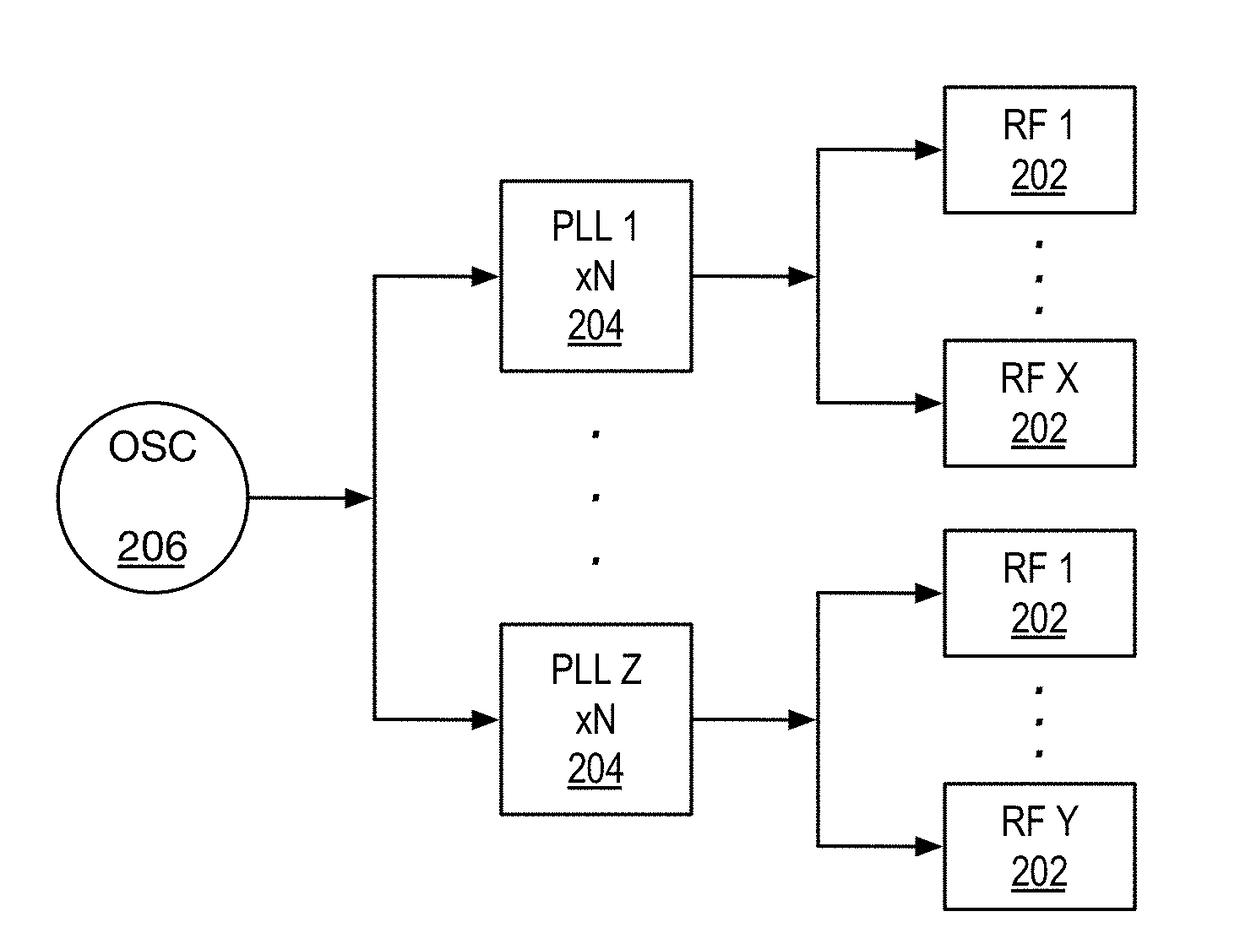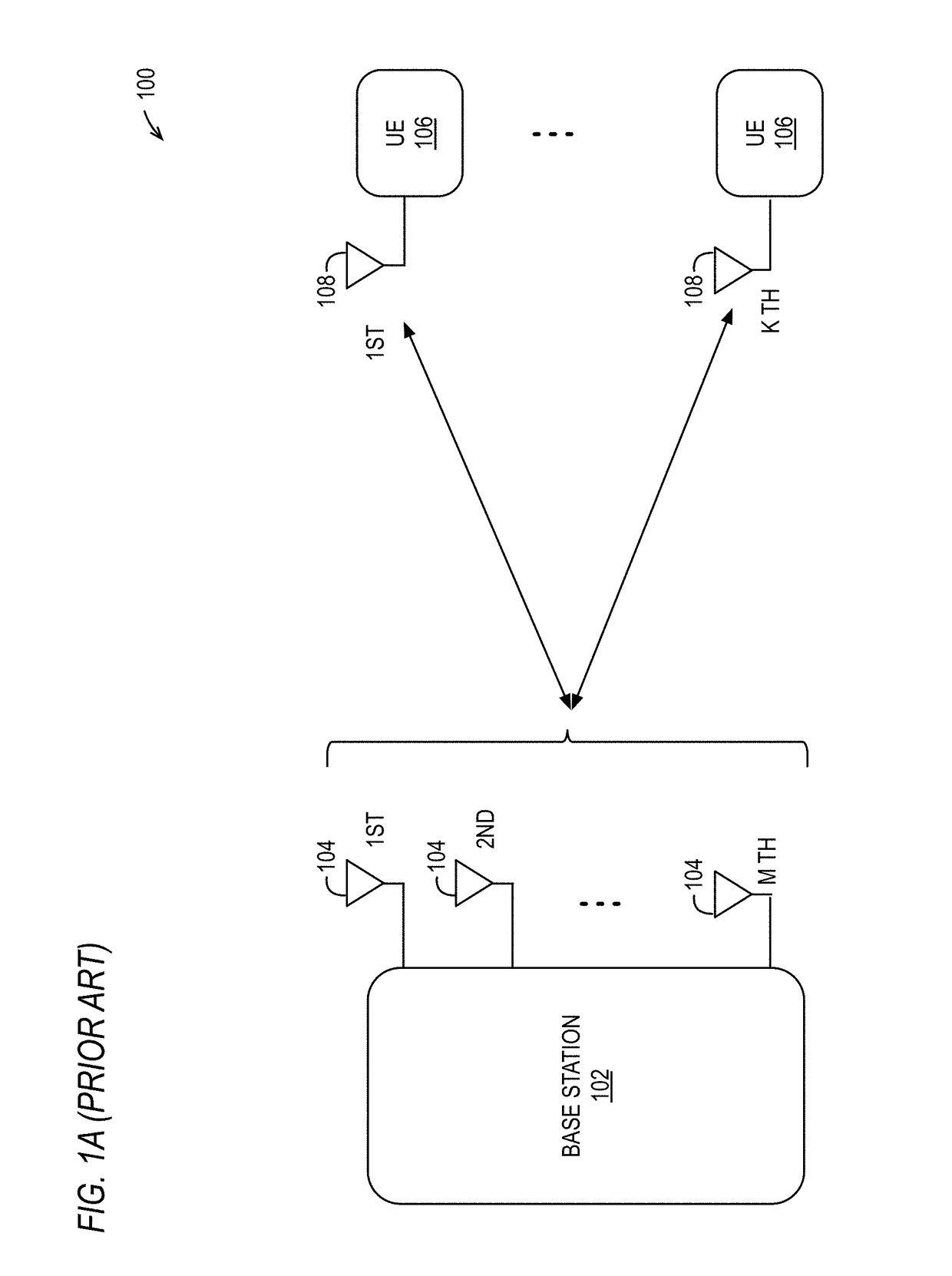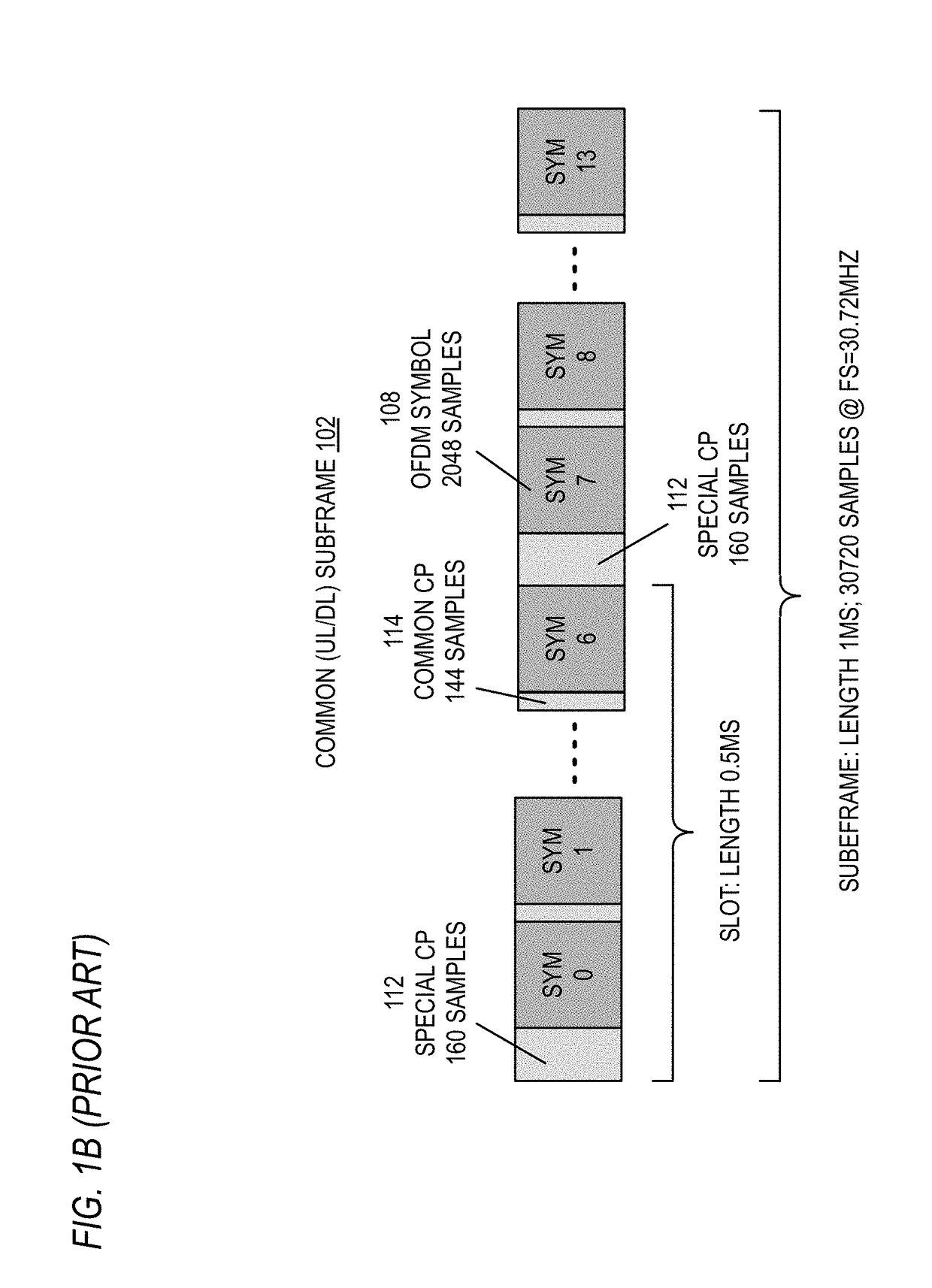Wireless communication system that performs measurement based selection of phase tracking reference signal (PTRS) ports
a phase tracking reference signal and wireless communication technology, applied in the field of mobile telecommunications, can solve the problems of high overhead, leakage degrade the orthogonality of the waveform, and inefficiency with respect to the use of available bandwidth
- Summary
- Abstract
- Description
- Claims
- Application Information
AI Technical Summary
Benefits of technology
Problems solved by technology
Method used
Image
Examples
example communication
Environments for the Disclosed Embodiments
[0049]With respect to the descriptions provided herein, the following abbreviations are used:[0050]PTRS: Phase Tracking Reference Signal[0051]DMRS: Demodulation Reference Signal[0052]TRP: Transmission Reception Point[0053]gNB: g NodeB (base station)[0054]PSD: Power Spectral Density[0055]PN: Phase Noise[0056]TTI: Transmission Time Interval, the minimum scheduling interval for a UE
Example Architectures of Base Station (BS) and User Equipment (UE)
[0057]The following are example architectures that can be used for base station (BS) and user equipment (UE) implementations within a wireless communication system. As these are example embodiments, it is understood that additional and / or different architectures could be used.
[0058]At the TRP the following are example architectures:[0059]One antenna panel only[0060]One LO (local oscillator) shared between all antennas of the panel[0061]Multiple LOs shared between the antennas of the panel[0062]With com...
example
[0158]Continuing the example from the feedback Type 1 above, the UE measures the 6×6 cross correlation matrix, and in this instance finds that the phase noise process on spatial streams 1 and 2 are highly correlated, and that those on spatial streams 3, 4, 5, 6 are highly uncorrelated. In that case, it may request the TRP to allocate five spatial streams and to map PTRS port 1 to DMRS port 1, to map no PTRS ports to DMRS port 2, and to map PTRS ports 2 through 5 to DMRS ports 3 through 6, respectively. It is noted that DMRS port 5 and 6 are used for another UE for this example.
Example Flow Diagrams
[0159]FIGS. 6A-C provide an example flow diagram for performing the PN correlation at the UEs and for the feedback of these correlations from the UE to the base station. It is noted that although the discussions herein focus on the DL, these methods can be extended to UL in a similar manner.
[0160]Looking first to FIG. 6A, at block 602, when PTRS communications are supported by the base sta...
PUM
 Login to View More
Login to View More Abstract
Description
Claims
Application Information
 Login to View More
Login to View More - R&D
- Intellectual Property
- Life Sciences
- Materials
- Tech Scout
- Unparalleled Data Quality
- Higher Quality Content
- 60% Fewer Hallucinations
Browse by: Latest US Patents, China's latest patents, Technical Efficacy Thesaurus, Application Domain, Technology Topic, Popular Technical Reports.
© 2025 PatSnap. All rights reserved.Legal|Privacy policy|Modern Slavery Act Transparency Statement|Sitemap|About US| Contact US: help@patsnap.com



